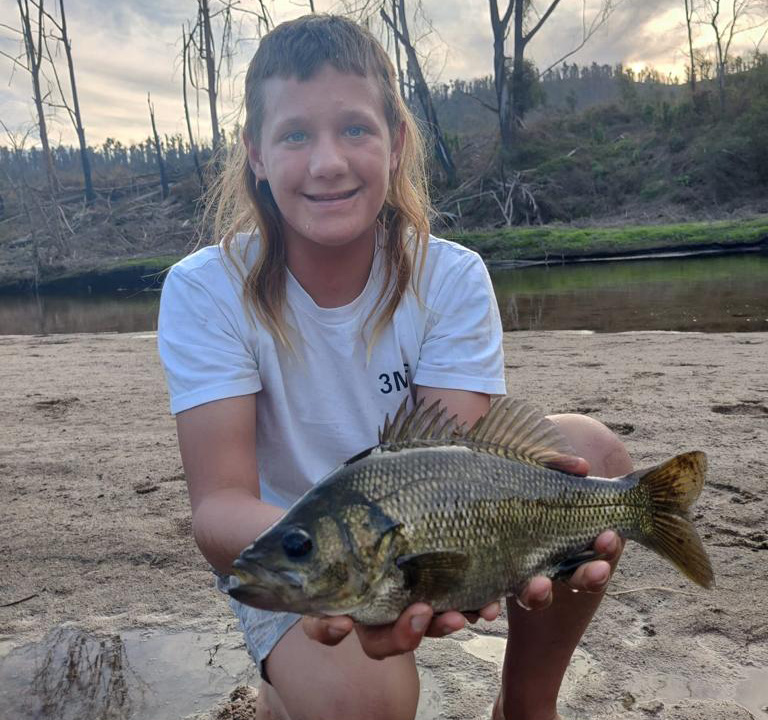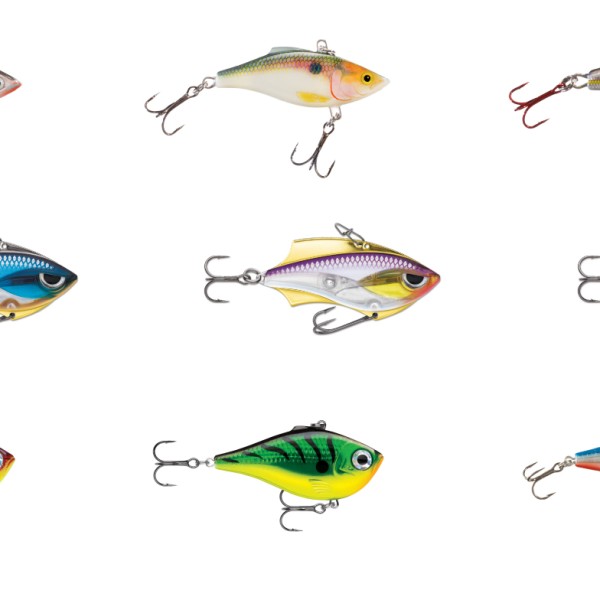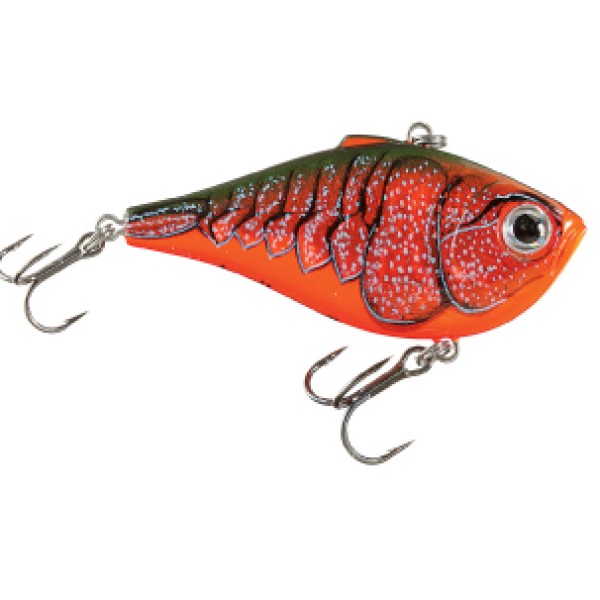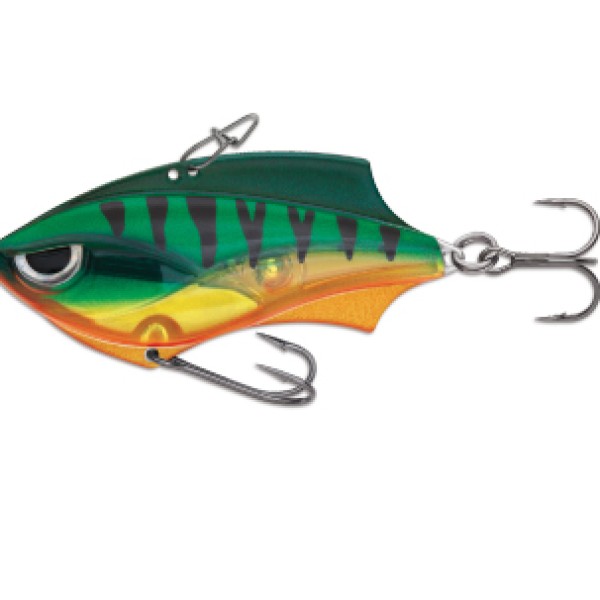Thrills of the Catch: A Novice's Guide to Australian Bass Fishing
Hello there, fellow fishing enthusiasts! This past weekend, I embarked on an unforgettable adventure at the Tuross River, near Moruya.
My mission? To target the mighty Australian Bass, a predator fish that had thus far eluded my hook. Under the expert guidance of local guides, Max and Milo van Zyl, I spent three thrilling hours walking up the river, hunting for these elusive perch.

The experience was enlightening, sparking a curiosity in me that sent me spiralling down a Google rabbit hole, researching all about this fascinating predator fish. Now, the anticipation for my next fishing trip, where I'll once again cast my line for these Aussie Bass, is positively electrifying!
In this article, I'm going to share all the insider tips and tricks I've learned about Australian Bass – from identifying them, to choosing the best lures, the perfect fishing spots, and the ultimate rod and reel setup. So, gear up and get ready to dive into the exciting world of Australian Bass fishing!
Adventure Awaits: Understanding the Australian Bass
Let's dive into the fascinating world of Australian Bass, scientifically known as Macquaria novemaculeata. These small-to-medium-sized fish are a remarkable sight in the coastal rivers and streams along the east coast of Australia. They belong to the Percichthyidae family, famously known as temperate perches. But don't let their size fool you; these native predators play a vital role in their ecosystems and are a thrilling catch for game fishers. Until the 1960s, they were simply called perch in most areas where they were caught, but the name "Australian Bass" has since caught on. So, get ready to embark on your own exciting journey of hunting this extraordinary species!
Species Snapshot
Habitat:
The Australian Bass inhabits coastal rivers and impoundments along Australia's eastern seaboard, from Wilsons Promontory in Victoria to Bundaberg in Queensland. They also venture into saltwater estuaries during their winter spawning season.
Conservation Measures:
The maximum size for possession is 30cm, with a possession limit of two. In Queensland's tidal waters, there is a closed season for Australian Bass from June 1 to August 31.
Physical Attributes:
Typically small to medium in size, ranging from 0.4-0.5 kg and 20-65 cm. Their appearance is similar to the silver perch, but they are distinguishable by a larger mouth and more deeply notched dorsal and anal fins. Their colour palette varies from golden hues to bronze or bronze-green. Interestingly, Australian Bass found in man-made impoundments tend to be larger than their river-dwelling counterparts.
Scientific Classification: Macquaria novemaculeata.
Unlocking the Secrets of Australian Bass Fishing: Timing and Techniques
While these freshwater marvels can be lured at any hour, their activity spikes during the dim light of dawn and dusk. This is the prime time for those keen on top-water lure fishing.
Under the cloak of these low-light conditions, the bass, being opportunistic feeders, venture out of their structures in search of food. The thrill of surface fishing during these hours is second to none, with the bass aggressively pursuing your lure, resulting in heart-thumping catches that will leave you buzzing with adrenaline.
However, as the sun rises, the bass retreat to their shelters, and the top-water bite gradually diminishes. Finding active fish during this period can be a challenge and requires covering a large area. Here, the "Run and Gun" method comes in handy — cast a few lines at each location, mark unresponsive fish on your GPS, and move on to the next spot. Trolling along the dam edges also proves effective. So, gear up, apply these strategies, and get ready for an exhilarating Australian Bass fishing adventure!
Identifying the Ideal Structure for Australian Bass Fishing in Rivers
Freshwater dams and rivers offer a plethora of structures, both man-made and natural. Understanding how to fish each type is critical to avoid an expensive and fruitless mission that could potentially end in disappointment. Here's some insight on how to navigate these structures while fishing for Australian Bass in rivers.
If you're familiar with the river and recent rainfall has occurred, look for structures that were previously exposed but are now submerged. These newly flooded areas often become hotspots for fish. Surprisingly, structures like barbed wire fences, old tractors, and islands teeming with livestock can significantly stimulate fish activity. For bass, exploring new grounds is as exciting as the launch of a new mall, making them line up eagerly for feeding!
Typically, deep waters by dam walls in rivers are excellent spots to target bass. Employ soft plastics or lipless crankbaits that emit strong vibrations, which bass detect via their lateral lines. Casting long towards the wall with a slow lure and a hopping retrieve along the rocks often yields a good catch. Ensure you're covering the entire water column with this technique. While Golden perch might be a common by-catch when fishing in this manner, they are always a pleasant surprise.
Using a small down rigger can get your lures deep into the strike zone around the thermocline where bass usually reside. Keep an eye on the sounder, and have casting rods ready if you spot a school at a depth beyond your trolling lure's reach. If possible, position yourself above the school and drop your casting rods into it. A sudden pause in your bait can often induce a strike, so stay alert. Happy fishing!
Perfect Your Rod and Reel Setup for Australian Bass
Let's dive into the fascinating world of rod and reel selection for Australian bass fishing.
While baitcast and spin outfits hold the top spots for most bass anglers, a rising tide of fishos are turning their attention to fly fishing gear to target these beloved native sportfish.
In the recent past, spin outfits have gained significant popularity, thanks to improved reel quality and their adeptness at handling lighter lures, which can be challenging with a baitcaster. If your arsenal includes light lures, especially those under 50mm, or lightly weighted soft plastics, then a spin reel is undoubtedly your best companion.
Using baitcast reels, however, requires a bit more skill. They demand a nimble thumb pressure to prevent the reel's spool from spinning faster than the lure mid-flight. But remember, too much pressure can cut your cast short. While it might seem tricky, baitcasting is a rewarding skill, offering immense pleasure when you successfully cast into a tight snag and hook up. Plus, baitcasters can handle heavier lines than spin reels, making them handy when fishing in areas with submerged boulders or gnarly timber where big bass might lurk.
As for rods, a standard estuary spin rod between 1.8m-2.1m is all you need. If your adventure involves walking the banks or fishing from a canoe, go for the shorter end of the spectrum as they're easier to handle in snug spaces. So, suit up, practice your skills, and get ready for an exciting bass fishing journey!
Best Light Tackle Rod and Reel Setups:
Shimano Setup
For a top-notch light tackle setup, you can't go wrong with Shimano. I recommend the Shimano Stradic CI4FB Spinning Reel paired with a Shimano Zodias Spinning Rod. The Stradic CI4FB reel is known for its lightness and smoothness, making it perfect for those long fishing sessions. The Zodias rod, on the other hand, offers sensitivity and strength, helping you detect even the slightest bite and fight your catch effectively.
Abu Garcia Setup
Next up, we have Abu Garcia. The Abu Garcia Revo X Spinning Reel coupled with an Abu Garcia Veritas Rod makes for a formidable light tackle setup. The Revo X reel boasts a lightweight design yet doesn’t compromise on strength or durability. The Veritas rod is renowned for its precision and balance, giving you the confidence to cast accurately and consistently.
Daiwa Setup
Lastly, for Daiwa enthusiasts, the Daiwa BG Spinning Reel teamed up with a Daiwa Tatula Spinning Rod is a winning combination. The BG reel is praised for its rugged build and superior line management, ideal for light tackle fishing. The Tatula rod, with its X45 BIAS construction, provides strength and flexibility, ensuring you're ready for any fishing challenge.
Remember, the best setup ultimately depends on your personal preferences and fishing conditions.
Choosing the Perfect Lures for Australian Bass
If you're planning a fishing trip for Australian bass, you're in for a treat! These fish are quite the sport and respond well to a variety of small to medium-sized lures. To ensure you're ready for any situation, it's helpful to have an assortment of lure styles at your disposal.
Among the favourites are hard-bodied divers, especially those measuring between 40-65mm with rounded bodies. The game plan? Cast your lure near structures where bass like to hang out - think timber snags, rocks, or shaded areas. A slow, erratic retrieve, with some flicks of the rod tip and pauses, can really get their attention. Medium depth divers are great for timbered rivers, while deep divers are your go-to for deeper waters.
If you're fishing in areas without submerged timber, try suspending hard-bodies. When paused, they hover enticingly, luring any curious bass. Add a little rattle after the pause, and even the most reluctant fish might not be able to resist.
For timber-filled areas, buoyant divers are a smart choice. They float over submerged timber when paused, and trust me, there's nothing more thrilling than feeling a bite just behind a branch. Just be careful, as this method could cost you a few lures if you're using light leaders!
Surface lures are another exciting option. Larger, darker lures are effective in low light, while smaller, naturally coloured ones work wonders during the day. Surface lures aren't just for night-time - on hot, humid summer days, if they mimic active insects like cicadas or grasshoppers, you're in for some dramatic strikes!
Don't overlook spinnerbaits and soft plastics. The former, often used for Murray cod, can be a successful bass option too. With these, you can control their depth, and they're generally snag-resistant. Soft plastics are versatile but more prone to snagging. They can be quite productive when bass are slow to bite or you're fishing among schooling fish.
Finally, don't forget other lure styles like jigs, vibes, lipless minnows, and chatterbaits. The beauty of bass fishing? There's always a lure to match the conditions, your style, and the mood of the fish! Happy fishing!
Four Top Soft Plastics for Bagging Australian Bass
- "Z-Man Finesse TRD":
Known for its buoyancy and durability, Z-Man's Finesse TRD is a versatile soft plastic lure that works great on a Ned Rig. Its slow sink rate makes it ideal for Australian bass who may be slow to bite. - "Squidgy Pro Lobby":
The Squidgy Pro Lobby is a popular choice for Australian bass fishing. Its lobworm shape and wriggling tail action can be irresistible to bass. - "Berkley Gulp! Minnow": This soft plastic lure is designed to mimic the look and smell of live bait. Its realistic movement and scent dispersion make it a good choice for luring in Australian bass.
- "Strike King Rage Tail Craw":
This soft plastic lure is designed with unique tail appendages that create a lot of water disturbance. Its aggressive action can provoke strikes from bass, making it a top choice for many anglers.
Surface Success: 4 High-Performing Topwater Lures for Australian Bass
- Whopper Plopper: This topwater lure is a favorite among many bass anglers due to its unique plopping sound and trail of bubbles that it creates when retrieved. Its distinctive sound and motion often trigger aggressive strikes from Australian Bass.
- Normal Popper (Rebel Pop-R): The Pop-R has a reputation for being one of the most effective poppers in the market. It's perfect for "walk-the-dog" style action and can create a commotion on the water surface that Australian Bass find irresistible.
- Heddon Super Spook Jr: This is a versatile topwater lure with a classic walk-the-dog style action. Its rattling sound and realistic movement are effective at attracting Australian Bass.
-
Rapala Skitter V: This topwater lure is designed with a V-Rap body design, allowing it to cut through the water quickly. Its aggressive side-to-side action and loud rattle can provoke strikes from Australian Bass.
In conclusion, Australian bass fishing is a thrilling and rewarding activity that offers a unique blend of challenge and excitement. Whether you're an experienced angler or a novice, understanding the right gear—from baitcast and spin outfits to fly fishing gear—can significantly enhance your fishing experience. Remember, the best setup, be it Shimano, Abu Garcia, or Daiwa, ultimately hinges on your personal preferences and the specific fishing conditions. So gear up, practice your skills, and embrace the joy of casting your line into the beautiful Australian waters in pursuit of the elusive bass. Here's to great fishing adventures!







.png)


 1.png)
 1.png)





.png)



 Newsletter
Newsletter

